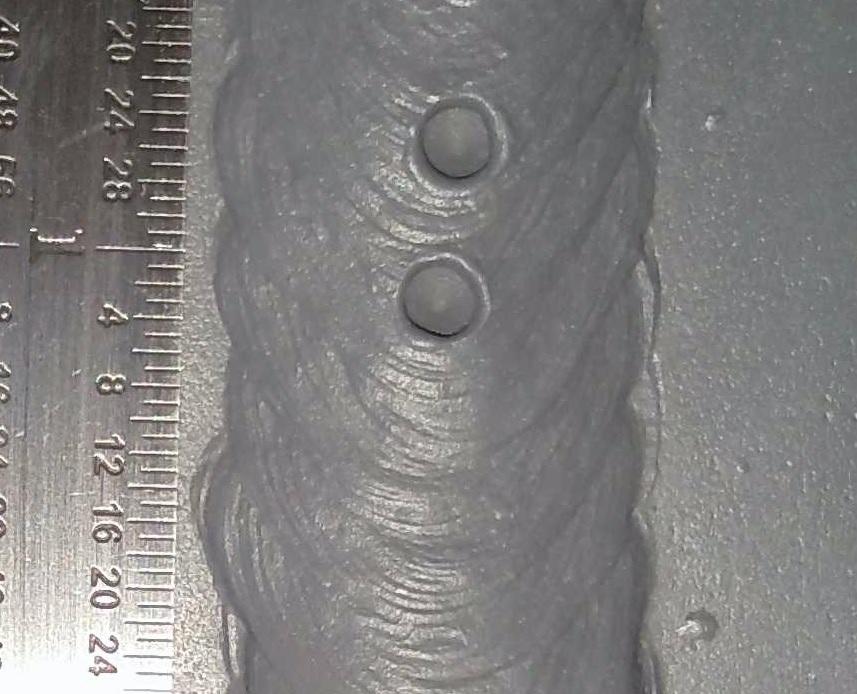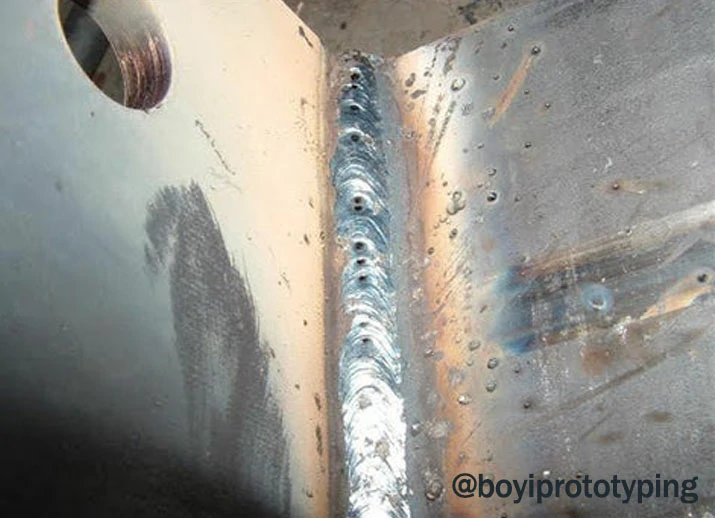Recognizing Porosity in Welding: Exploring Reasons, Impacts, and Avoidance Techniques
As experts in the welding sector are well conscious, understanding the causes, impacts, and avoidance techniques related to porosity is crucial for accomplishing robust and reputable welds. By diving right into the origin creates of porosity, analyzing its detrimental results on weld quality, and discovering effective avoidance strategies, welders can boost their understanding and abilities to generate high-quality welds consistently.
Usual Sources Of Porosity
Porosity in welding is primarily brought on by a mix of variables such as contamination, improper protecting, and poor gas insurance coverage during the welding procedure. Contamination, in the type of dust, grease, or corrosion on the welding surface, develops gas pockets when warmed, bring about porosity in the weld. Inappropriate securing happens when the protecting gas, frequently used in procedures like MIG and TIG welding, is unable to totally safeguard the molten weld pool from reacting with the surrounding air, leading to gas entrapment and subsequent porosity. Additionally, poor gas insurance coverage, commonly due to incorrect circulation rates or nozzle positioning, can leave components of the weld unguarded, permitting porosity to form. These variables jointly add to the formation of voids within the weld, weakening its stability and possibly creating structural issues. Recognizing and addressing these common reasons are vital steps in protecting against porosity and guaranteeing the top quality and stamina of bonded joints.
Effects on Weld High Quality
The existence of porosity in a weld can substantially jeopardize the general high quality and integrity of the welded joint. Porosity within a weld creates gaps or dental caries that damage the framework, making it a lot more prone to breaking, corrosion, and mechanical failing.
In addition, porosity can prevent the efficiency of non-destructive testing (NDT) techniques, making it testing to find other problems or suspensions within the weld. This can lead to substantial safety and security worries, especially in critical applications where the architectural stability of the welded parts is vital.

Avoidance Techniques Review
Provided the harmful impact of porosity on weld top quality, efficient prevention strategies are important to maintaining the architectural stability of bonded joints. Among the primary avoidance methods is comprehensive cleansing of the base materials prior to welding. Pollutants such as oil, grease, corrosion, and moisture can add to porosity, so guaranteeing a tidy work surface is necessary. Correct storage space of welding consumables in completely dry conditions is likewise essential to protect against moisture absorption, which can lead to gas entrapment throughout welding. Additionally, choosing the appropriate welding specifications, such as voltage, current, and take a trip rate, can assist decrease the risk of porosity development. Making sure appropriate shielding gas circulation and coverage is another essential prevention method, as not enough gas protection can lead to climatic contamination and porosity. Proper welder training and accreditation are crucial for implementing precautionary procedures effectively and regularly. By integrating these avoidance strategies right into welding practices, the occurrence of porosity can be considerably minimized, bring about more powerful and extra dependable welded joints.
Value of Appropriate Shielding
Correct shielding in welding plays a critical role in preventing climatic contamination and making certain the honesty of welded joints. Protecting gases, such as argon, helium, or a mix of both, are typically used to safeguard the weld swimming pool from reacting with components airborne like oxygen and nitrogen. When these reactive components enter into contact with the warm weld pool, they can cause porosity, bring about weak welds with minimized mechanical buildings.

Poor shielding can cause various flaws like porosity, spatter, and oxidation, compromising the architectural stability of the bonded joint. Sticking to correct shielding methods is crucial to produce top notch welds with marginal defects and make sure the long life and integrity of the welded components.
Tracking and Control Approaches
Just how can welders properly check and control the welding process to guarantee ideal outcomes and protect against defects like porosity? One key approach is through making use of sophisticated tracking modern technologies. These can consist of real-time surveillance systems that provide comments on specifications such as voltage, existing, take a trip speed, and gas flow rates. By constantly monitoring these variables, welders can identify deviations from the ideal problems and make immediate adjustments to prevent porosity formation.

Additionally, applying proper training programs for welders is essential for checking see and managing the welding process effectively. What is Porosity. Enlightening welders on the value of preserving consistent criteria, such as appropriate gas shielding and take a trip speed, can aid stop porosity problems. Normal evaluations and accreditations can also make sure that welders excel in tracking and managing welding processes
In addition, the use of automated welding systems can boost tracking and control capabilities. These systems can exactly regulate try here welding criteria, reducing the chance of human error and making certain constant weld quality. By integrating advanced tracking innovations, training programs, and automated systems, welders can properly monitor and regulate the welding process to decrease porosity problems and accomplish top quality welds.
Verdict
